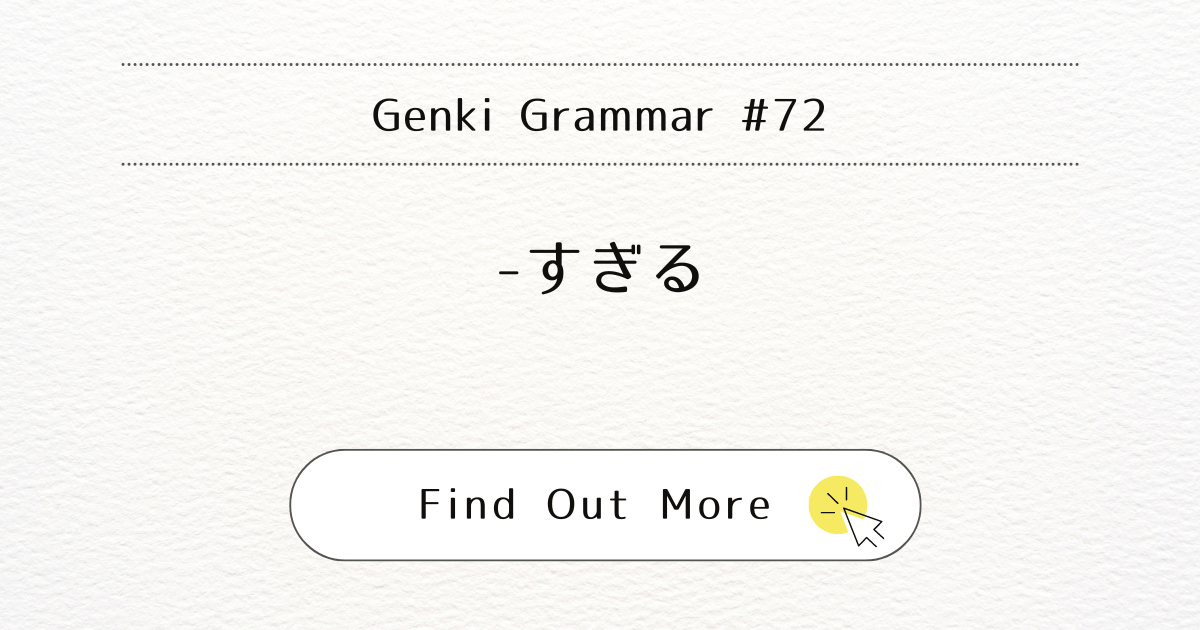
Introduction
In this blog post, we will learn about the Japanese grammar pattern: -すぎる (sugiru). This pattern is used to express “too much” or “to excess.” Let’s explore how to use it!
What It Means
The -すぎる (sugiru) pattern means “too much” or “to excess.” It indicates that something is beyond normal or proper. すぎる (sugiru) conjugates as a regular ru-verb.
When You Use It
Use -すぎる (sugiru) when you want to:
- Show that something is done too much.
- Indicate that something is excessive or beyond what is normal.
Examples
Here are some examples to help you understand how to use -すぎる (sugiru):
Verbs:
早く起きすぎました。
(Hayaku oki sugimashita.)
I got up too early.
食べすぎてはいけません。
(Tabe sugite wa ikemasen.)
You must not eat too much.
Adjectives:
この部屋は高すぎます。
(Kono heya wa taka sugimasu.)
This room is too expensive.
この町は静かすぎます。
(Kono machi wa shizuka sugimasu.)
This town is too quiet.
Note
- When using すぎる (sugiru) with verbs, attach it to the verb stem.
- When using すぎる (sugiru) with い-adjectives, drop the い (i) and add すぎる (sugiru).
- When using すぎる (sugiru) with な-adjectives, drop the な (na) and add すぎる (sugiru).
- Use すぎる (sugiru) to express something beyond normal or proper, often with a negative connotation. For example, 親切すぎます (Shinsetsu sugimasu) means “too kind” and is not a straightforward compliment.
- If you simply want to express a high degree of something, use modifiers like とても (totemo) or すごく (sugoku).
- In addition to the verb conjugation, you can also use the noun すぎ (sugi), as in 食べすぎです (tabe sugi desu).
Conclusion
The -すぎる (sugiru) pattern is a useful way to express excessiveness in Japanese. It helps you indicate when something is beyond what is normal or proper.



